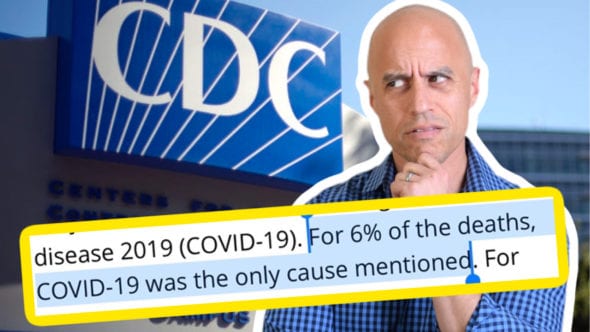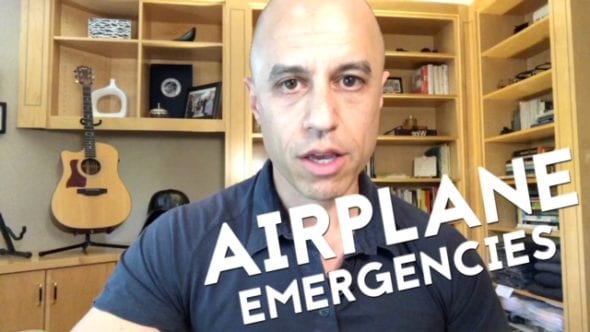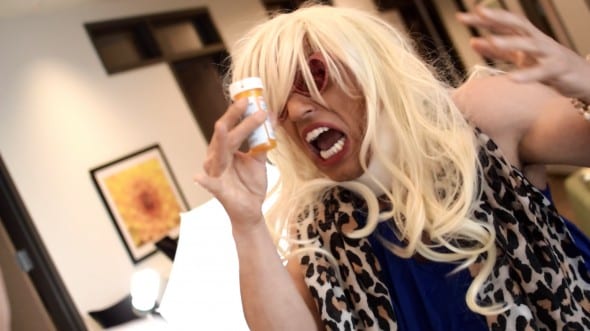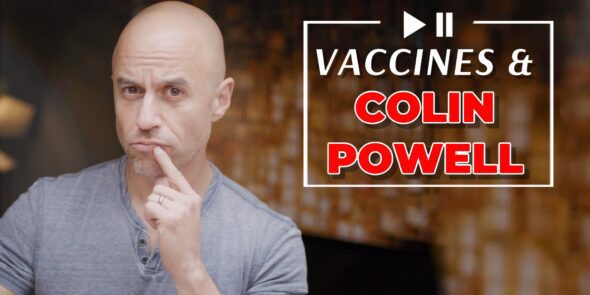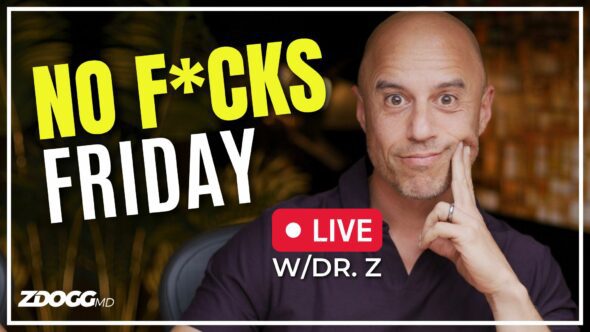The NRA asked “self-important” doctors to “stay in their lane” when it comes to guns.
Yeah, naw, I don’t think so.
But rather than the typical knee jerk reactions from outraged front-line clinicians across the country, I think it’s past time we had a more rational discourse and tried to understand all sides of this complex issue…and that will inevitably piss EVERYONE off, so let’s do this!
PS watch the whole thing before you get TOO angry…
Required Reading:
- How bystanders can help manage gunshot victims and other bleeding trauma (the Stop The Bleed campaign)
- The Riddle of the Gun by Sam Harris (required reading for folks who want to ban firearms outright)
- NRA’s original tweet
- One physician response from Dr. Esther Choo
- How our moral “palate” figures in all this
ZPac, check out the original video here on Facebook and share this with your friends, family, parents, and coworkers. #ThisIsOurLane
You can check out the free podcast version here on iTunes and Soundcloud.
FULL TRANSCRIPT BELOW.
Alright everybody. This show is going to piss off every single person on both extremes of the gun issue. Because we’re going to talk about the NRA’s Tweet and we’re going to talk about things we can actually do to save lives when it comes to gun violence.
Let’s get it started. Cause if we’re gonna piss people off let’s do it sooner rather than later and then get to the meat of this thing.
Alright, the NRA put out a Tweet recently that said something to this effect, self important doctors should stay in their lane when it comes to guns. Now whoever made that tweet if their goal was to get attention they succeeded. Mission accomplished. Because they managed to trigger no pun intended, actually pun intended, every single doctor on Twitter and throughout the country who immediately responded in the emotional way that you would expect them to respond when they are on the frontlines taking care of the consequences of gun violence.
Now when I first saw this Tweet, you have to understand, my thoughts on guns are actually very nuanced in a way that will piss off both sides on this debate. When I first saw this Tweet, this is what I thought: How dare you tell us to stay in our lane. When I was a medical student I held pressure on an aorta on an 18 year old kid in the OR who was caught in the crossfire in a gun fight in Fresno, California. He went into the OR awake, conversing we put him sleep. They couldn’t stop the bleeding in the OR because the damage was too extensive from this particular type of ammunition. And he died on the table with my thumb on his aorta.
If you don’t think that’s causing PTSD for frontline healthcare providers, I was in the emergency department as a resident at Stanford and a woman came in the victim of a gunshot wound, from a spouse in a domestic violence dispute. We had to crack open her chest and I massaged her heart, and she died. And there is the bullet. Now if you don’t think that’s gonna trigger us to stay in our lane. Are you fucking kidding me NRA? If your goal was to piss off people who deal with the consequences. Who pick up the mess that results from gun violence well hey you did it? Okay. So that’s the emotional response that that Tweet triggered in frontline healthcare practitioners. Okay, a lot of us have literally PTSD from dealing with gunshot violence. Gun violence.
Now, here is the thing. That’s the emotional response. And you can see even I get emotional about it. Because we’ve been there. That is our lane. We take care of these injuries and we know what they can do. But here is the thing. The NRA is right. They’re absolutely right when they say a lot of physicians do not understand the first thing about firearms. They do not understand why anyone would want to own a gun. And they’re making these pronouncements from an emotionally biased way and even when they study it and look at research they might be cherry picking studies to support their pre existing hypothesis which is guns should be banned. And the truth is I grew up in Clovis, California, rural central valley California. It was a culture of owning guns because you lived in rural areas. The cops were not gonna get to your house in time to save you if there was an intruder. So you had a weapon. You hunted. You knew how to take care of guns. And you deeply respected the Second Amendment which is the right to bear arms. And I understand that because it came from a moral palate of valuing liberty versus oppression.
And this is an important thing to understand in people who really care about firearm ownership. And there are a lot of doctors who are members of the NRA. Who care about this. If you read Sam Harris’s piece, the Riddle of the Gun, if you’re absolutely opposed to guns, read that piece and I’ll put a link in because it will open your eyes to a little broader understanding of the firearm issue. There are 300 million guns in this country. You’re not gonna get rid of them. And there are one million Americans for whom gun ownership is the primary most important thing.
And again it comes from a moral palate of liberty versus oppression. When your moral palate is focused on care versus harm we talked about this in another show, of course you’re gonna say just ban weapons. It just doesn’t work that way. It’s more complicated than that. And if you don’t understand why people would want to own weapons then I think it’s very hard to talk rationally.
We need to look at both sides of this. We need to respect where the other side is coming from. And I think physicians and the NRA and responsible gun owners should work together to come up with sensible evidence-based, which means we have to study. You cannot suppress the science, but you have to study it in the correct balanced way. If you do that we can actually come up solutions that preserve individual liberties to own firearms which is an American cultural tradition that goes al the way back to pre revolutionary era. And the care harm principle of let’s stop having lives being lost unnecessarily if we can make them safer, and that is gonna have me transition into the second part of this talk, which is what can we do if we’re gonna stay in our lane our lane is saving lives.
ZPac. There is a campaign called Stop the Bleed. That is an American College of Surgeons campaign. Again, our lane. They’re the ones holding pressure on these gunshot wounds. This is how you can respond if you’re in the setting of a mass shooting. You see somebody bleeding on the street. There is a terrorist attack. Whatever it is. What can you do? Bystanders can save lives and it’s a very simple algorithm and if you go to bleedingcontrol.org you can get more information in detail, resources, classes, etc. And in the Pittsburgh Synagogue shooting that just happened emergency officials were saying that the Stop the Bleed Campaign bystanders saved at least three lives. Here is how you can do it.
If you see something like this happening and somebody is bleeding. The first thing you do is call 911 and make sure the scene is safe, if it’s not safe get to safety. If you can bring the victim to safety with you even better. Once you have assured safety and you’ve called emergency services the next thing you do is observe this body, this victim and see if they’re bleeding from somewhere. Signs can be pulling blood on the clothes. Pulling blood on the ground. Spurting blood from a wound. Oozing blood from a wound. Or a person who’s confused or not answering questions correctly. Then you gotta actually dig into the clothes and take off clothes. It feels crazy. It feels weird and rape-y. It’s not. You’re saving lives.
Take off clothes, find where the wound is, and say okay. Is it on an extremity. Is it somewhere central like a shoulder? Or a chest? Something like that. Once you figure that out you look at what you have on hand. If you don’t have a tourniquet or gauze or a first aid kit like that, this is what you do, you grab whatever you have, whether it’s a clean cloth. A towel. A shirt off your back. Any kind of fabric. You find that wound. And you, it doesn’t matter if it’s on an extremity or in the center part of the body, and you take that cloth. You ball it up. You put it on the wound. And you push as hard as you can.
It is going to hurt. You and the victim. That means you’re doing it right. Hold that pressure. You are trying to stop the bleeding until medical personnel arrive and relieve you. That means pushing really hard with two hands using that cloth. Now, if you have gloves obviously you’re going to protect yourself from blood but ball up the cloth so you protect yourself best you can and push. If the wound is very deep shove that clean cloth into the wound as far as you can and then push with two hands.
Now, if you have a tourniquet. And this is a CAT combat application tourniquet. It’s a special type which we’ll talk about. But any tourniquet will do and the wound is on an extremity, an arm or a leg, this is what you do. One to two inches above where the wound is you apply the tourniquet. Now the one exception is you do not put the tourniquet on a joint. It won’t work. Put it just above the joint. And about one or two inches closer to the heart than the wound is tighten that tourniquet as tight as you can until you see the bleeding stop. It’s going to hurt like hell. That means you’re doing it right. That will actually prevent somebody form bleeding out. You can die of blood loss in six minutes. Okay?
So you can save lives. Now the question is once you put the tourniquet on, how long do you have before you’re gonna lose that limb? This is a common misperception. Two hours is the current teaching. So that thing can be on for two hours and you can save a life and still preserve the limb before neurovascular damage sets in.
So, this is what you do. If you have the presence of mind, write the time and the date you put that tourniquet on so that emergency personnel can then note that and the surgeons can know when it was put on. Okay? So, this is a combat application tourniquet. You can buy these online. This is Logan’s. This is amazing because it velcros on. You tighten it. And then it has this little doohickey that you turn to tighten the tourniquet and you can keep turning it until you see that oozing and bleeding stop. Then you strap it in. And it says right here, time. So you don’t forget and hopefully you have a pen but if not at least you make a mental note. This is the time I put this on. And you wait for emergency personnel to come.
The other things you can get from any store online is this special clotting sponge or clotting gauze. It’s impregnated with chemicals that help clotting. If you have this in your car on your person or in your purse or wherever, and you see the need to close up a wound instead of using a towel or a dirty shirt or something use this. Push it all the way in and then you can put the towel over the shirt on top and just push two hands. You can save a life and a limb actually, especially if you write the time on and this works. This is something you can do to stop the bleeding. And this is very much in all of our lanes. So my call to action you guys is learn about this. Get this stuff. Go to BleedingControl.org and in the comments I don’t want to see fighting.
I don’t want to see belittling. I don’t want to see condescension. I wan to see real dialogue because the truth is not at the extremes on this it’s right smack dab in the center. And that’s all of our lanes. If you like the way we teach and you agree that we can change things for the better, become a supporter of the show click the link. It means a lot to us but more important, is you commenting and you sharing. We out.
Category
- The ZDoggMD Show (817)
- Featured Videos (189)
- Doc Vader (142)
- Against Medical Advice (128)
- Medical Humor (95)
- Public Service Announcements (87)
- Music Parodies (74)
- Nurses (59)
- Meditation (45)
- The VPZD Show (38)
- ZVlogg (36)
- ZTalks (28)
- ZBlogg (24)



